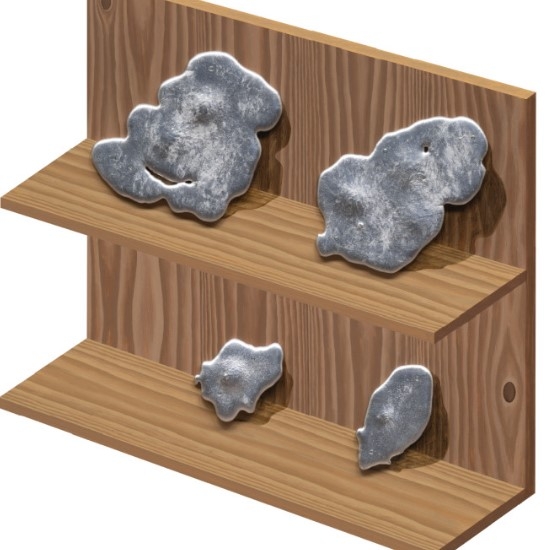Are the 90s back? Most likely not – we have just stepped into 2023 but the question is not completely baseless. Kaido Ole's paintings from the first half of the 1990s, that is, the very beginning of his artistic career, seem at first glance rather similar to those we see here. This, of course, is not a random coincidence. The return that Ole began in 2020 and which he has previously introduced under the title "Abstract. Again!", has been a conscious choice by the artist to move forward. It is accompanied by a semi-rhetorical question: if anything, and what exactly has changed in the past 30 years? "Yes; everything and something more" could perhaps be the first rhetorical answer if we forget for a moment that the question was posed about Ole's paintings. But the answer is also not embarrassingly wrong when it comes to his paintings.

Photo from Temnikova & Kasela gallery
The early paintings with which Ole began developing his idiosyncratic imagery could broadly be considered abstract geometrical compositions that over time became increasingly depictive, geometrical forms developed into geometrical characters – ballheads being among the most seasoned of these – and the young abstract painter became a skilled storyteller. But what kind of stories do MDF, metal, rubber and paint tell us?
It is difficult to give a definitive answer but a certain pleasure taken from using different materials, or at least putting them to a test, was part of Ole’s work also in the 90s. At the time, above all, this was evident in the choice of the base material of the painting; for example, in the use of large and small or white planks and small plywood or MDF. Now, some of the materials have found their way from the base to the foreground and are no longer merely materials but, having become almost main characters, demand another kind of attention. At the same time, other materials and identifiable objects are created using other means and are mediated virtually – these have been depicted. This seems to cancel out the abstract in Ole’s work but only at first glance, because all depicted or positioned elements, identifiable or not, are in some sort of rivalry and it is precisely in this relationship that the abstract is expressed in these paintings.
All of the above did not exactly give an answer to what kind of stories MDF, metal, rubber and paint tell us but rather suggested that words can be used for almost anything. Materials act quite similarly as well. But words are not great – they seem to promise everything but do not really deliver. In that sense, materials are more reliable narrators, even though they are more difficult to understand at times. At least they are sincere and when you find a common language, their stories meet you half way.
Text: Marten Esko
Galerii nimi: Temnikova & Kasela gallery
Address: Peetri 12, Tallinn, Estonia
Phone: +372 6405770
Opening hours: Tue-Sun 13:00 - 18:00
Open by appointment
Open: 20.01.2023 — 12.03.2023
Address: Peetri 12, Tallinn, Estonia
Phone: +372 6405770
Opening hours: Tue-Sun 13:00 - 18:00
Open by appointment
Open: 20.01.2023 — 12.03.2023